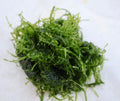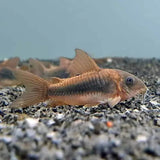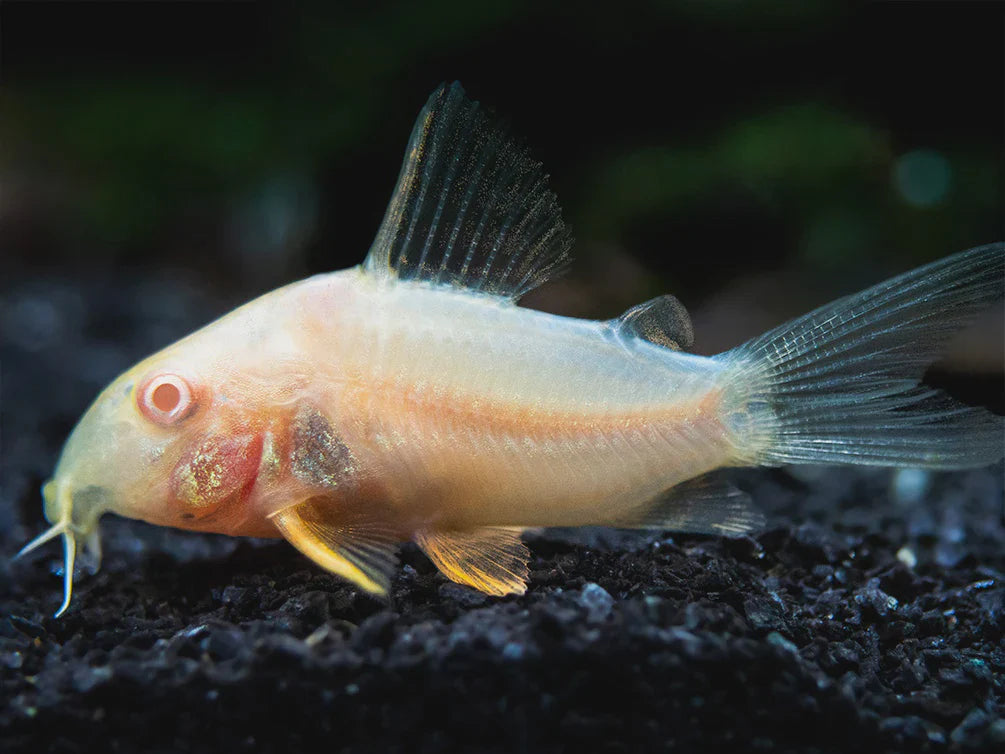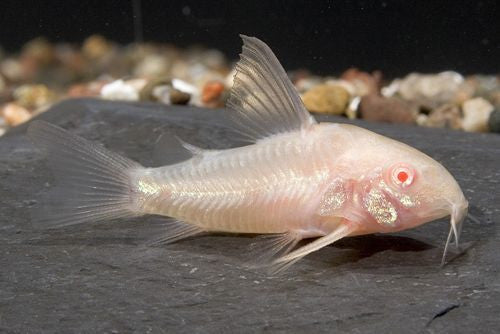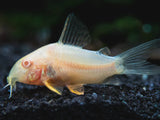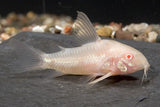Albino Corydoras
Albino Corydoras
Portion Size
Size: 2cm
Description
The Albino Catfish is a small tropical freshwater fish in the “armored catfish” family that ranks among the most popular cory catfish kept in home freshwater aquariums. These fish are easy to care for, hardy, and are a little on the shy side. This species is known to live to up to 10 years in captivity.. It is widely distributed in South America on the eastern side of the Andes, from Colombia and Trinidadto the Rio de la Plata basin. Albino catfish mostly inhabit slow-moving rivers and streams and prefer areas with shallow, muddy water. They have been found in fast flowing rivers to nearly stagnant pond and marshes. They are one of the few fish that can thrive in stagnant water. They have a special ability to breath air from the surface of the water. In the home aquarium, you will often see them darting to the surface to take a quick gulp of air and then dive back down to the bottom.
Small, active, and peaceful, the Albino catfish is just one color variation of the same species known as the green cory. In addition to color variations of green, bronze, albino, and even black.
Like all corydoras, this species is armored with overlapping scales known as plates or scutes. Their fins possess a leading spine, which can be locked in place to make it difficult for larger fish to swallow them. This spine can make netting them difficult, and care should be taken when doing so. In the home aquarium, these corys are prized for being charmingly expressive.
Albino catfish are a schooling fish. Keep them in groups of at least five. Cory catfish tankmates can include most community tank fish as long as they are non-aggressive and friendly in nature. Otocinclus catfish, tetras, swordtails, and other corys can be a good fit. You will not want to put corys in the same tank with Oscars, Texas cichlids, Jack Dempseys or any large mouthed fish. They can injure corys or may eat them.
Albino catfish tolerate a wide variety of water conditions. However, they prefer an acid to neutral pH, soft to slightly hard water. They are not tolerant of salt and should be moved if the tank is going to be salted.
Cories like to dig in the substrate for food. To avoid irritation to their barbels, use small smooth-edged gravel or sand for substrate. They tend to be shy and should be provided with hiding places (preferably of wood or stone), as well as floating plants to subdue the lighting. They prefer low water levels similar to the shallow waters near the banks of the Amazon tributaries that are their native habitat.
In the wild, corys mainly feed on small crustaceans, worms, and insects. Albino Catfish are omnivorous and will accept everything from flake to frozen fish foods. To maintain them in good health a variety of foods should be offered, including their favorite live foods: bloodworms, blackworms, daphnia, and brine shrimp. They tend to ignore other live foods that remain near the surface of the water. They are bottom feeders, which can prove to be a problem because other fish may consume most of the food before it reaches the bottom. Owners should observe them at feeding time to ensure they are getting a sufficient amount of food. Sinking pellet foods for bottom dwellers are best for these situations.
Shipping Note
We ship from Mondays to Wednesdays (all orders from Monday to noon of Wednesday will be ship out in the same week and any orders made after noon of Wednesday will be processed next Monday).
- Any orders you make from noon Wednesday onward will be processed the next Monday.
- Most orders from Monday to noon of Wednesday will be shipped out in the same week.
Any other dry goods, bonsai, plants, and accessories will be sent via standard post. Usually, you will receive the items within 3-7 business day after order is fulfilled.
For more enquiries, please check out our shipping policies below.
We alway try to process your order as soon as we can, if you have any questions please contact us at support@aquafy.com.au.



